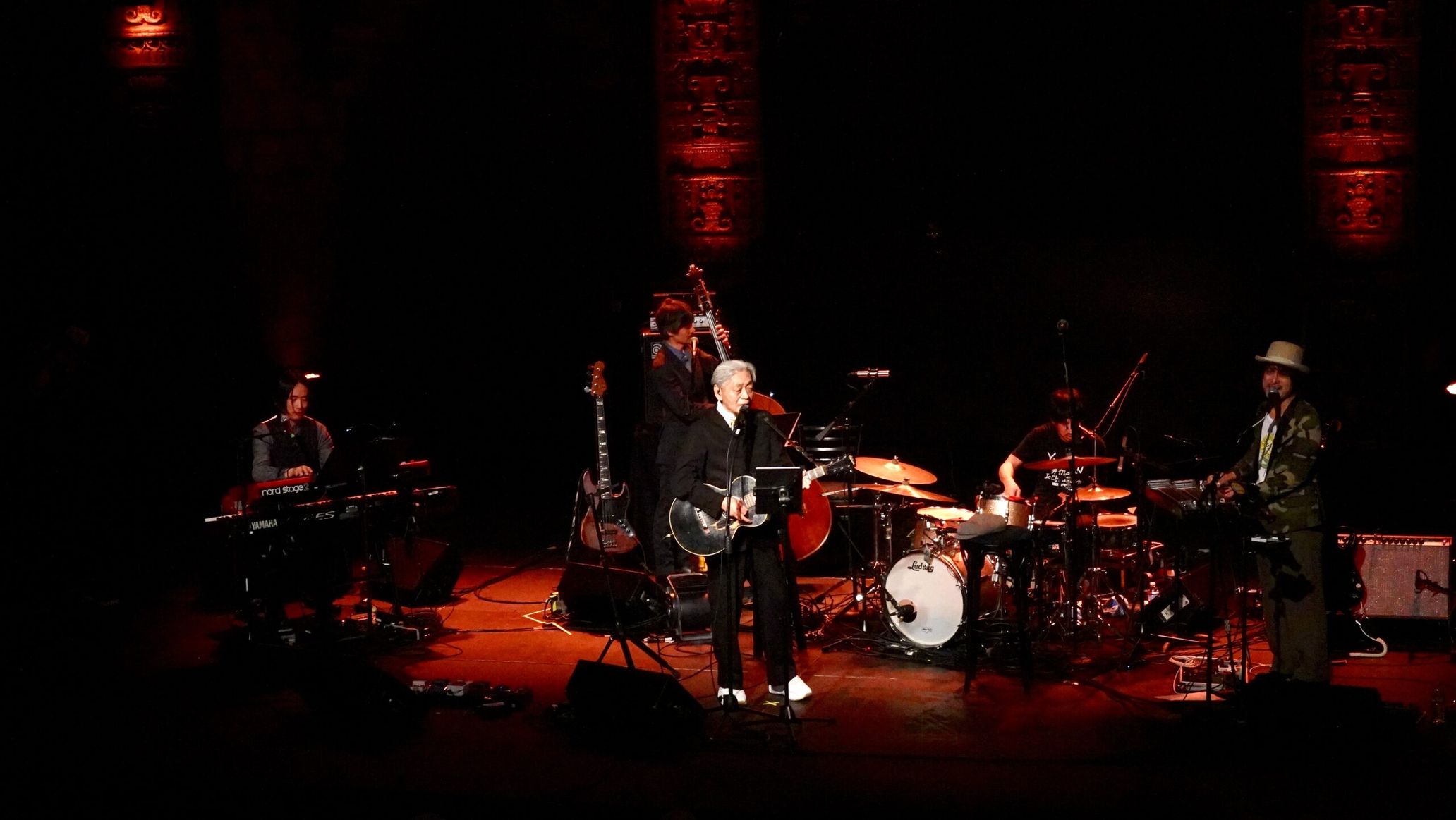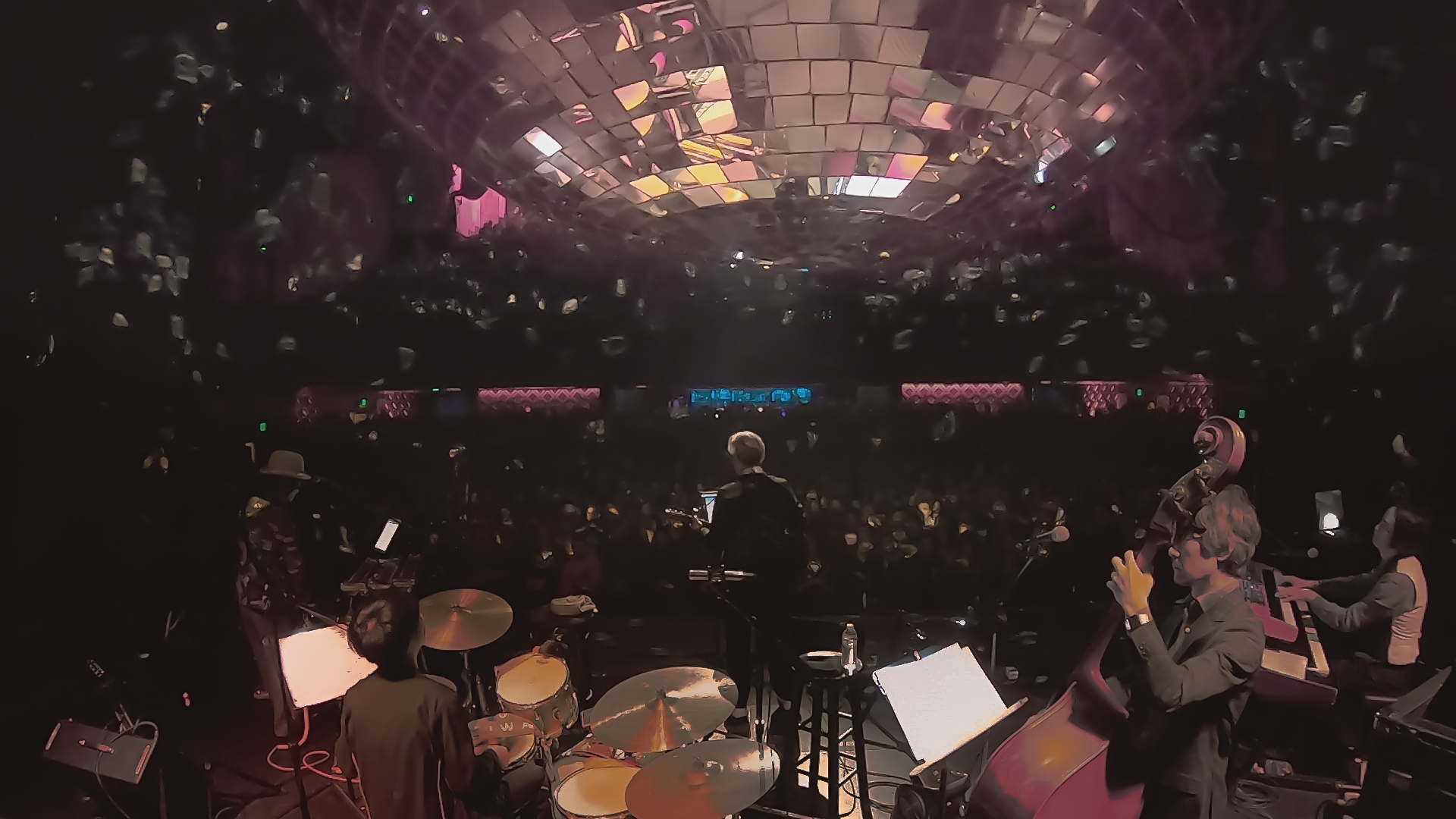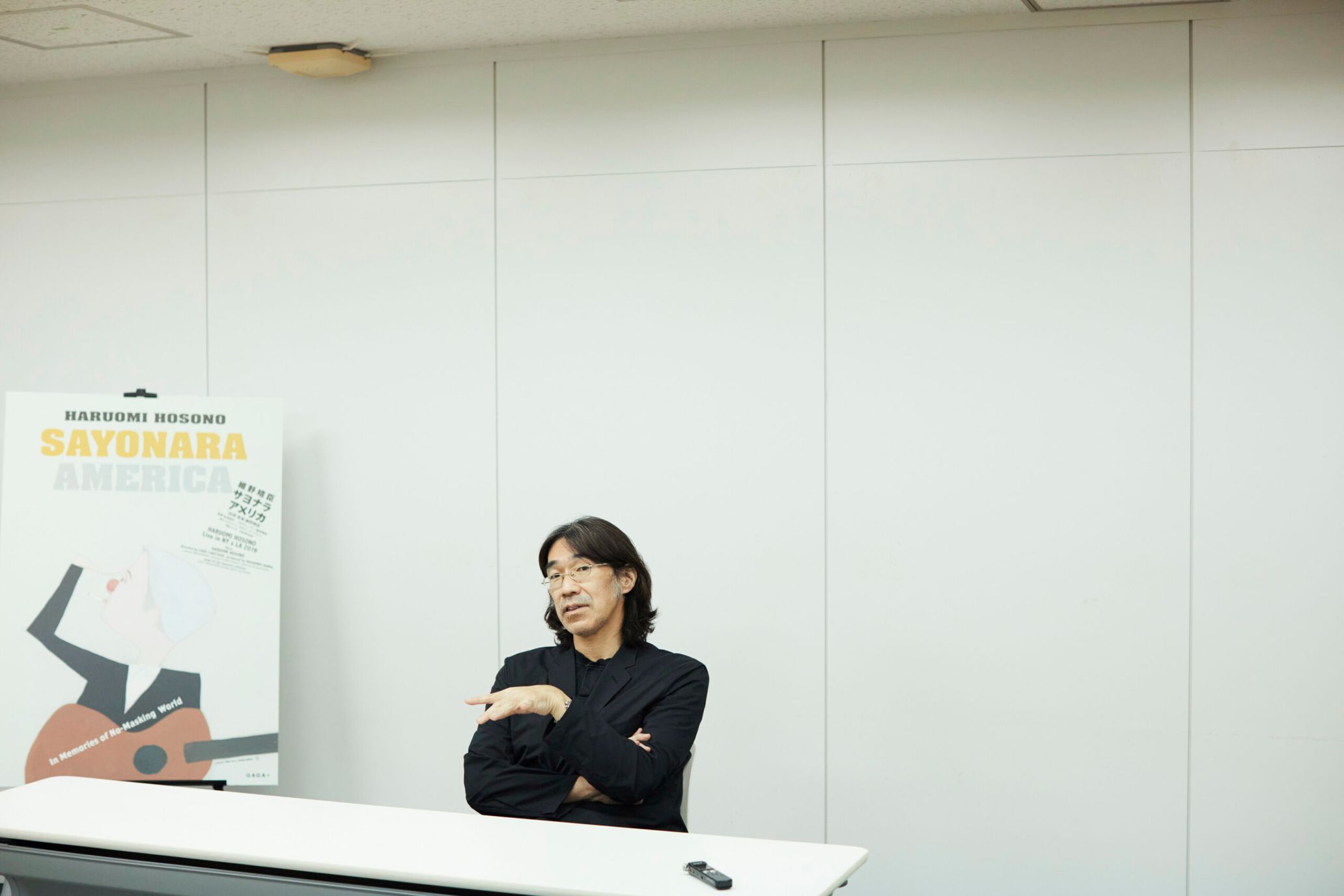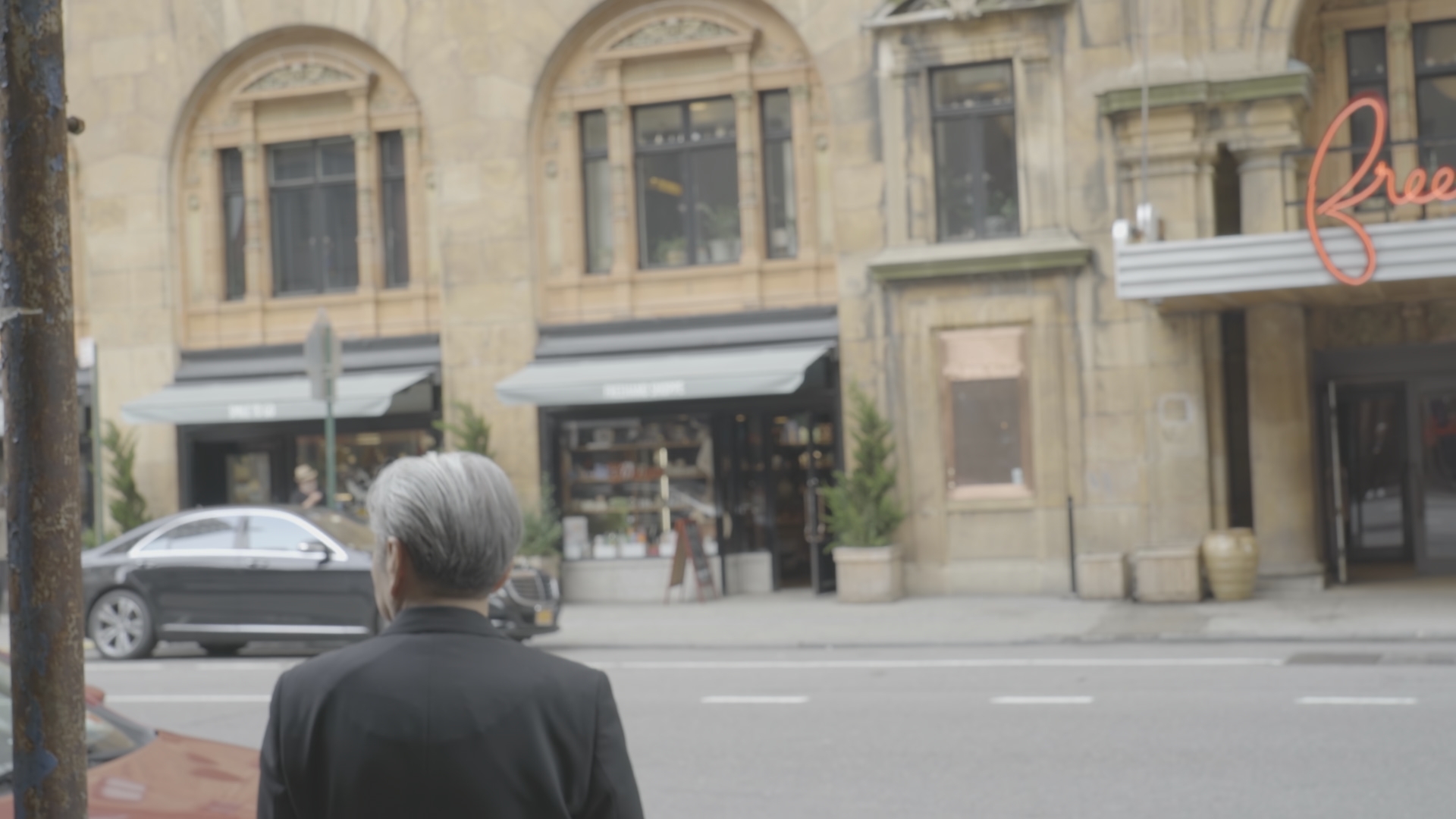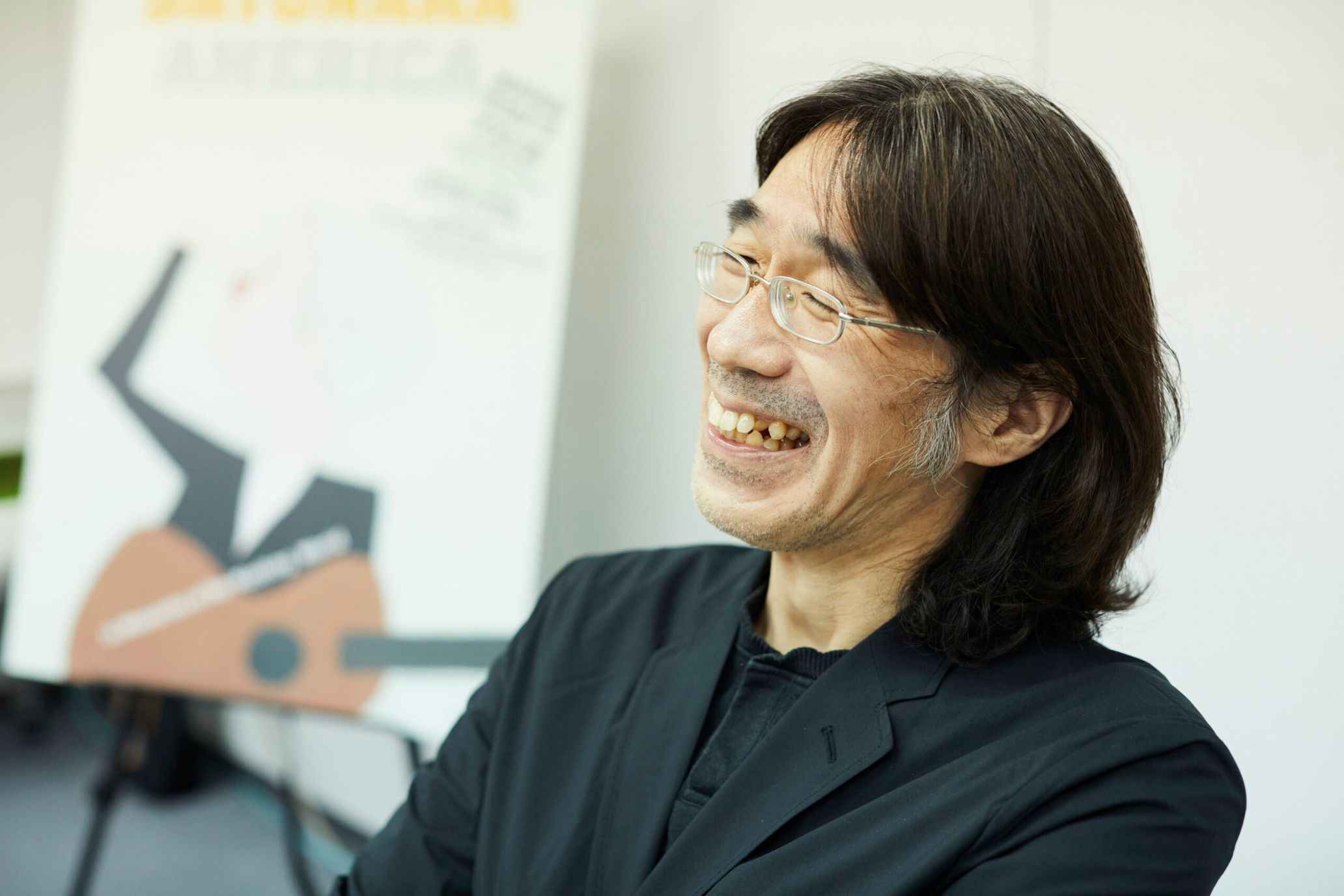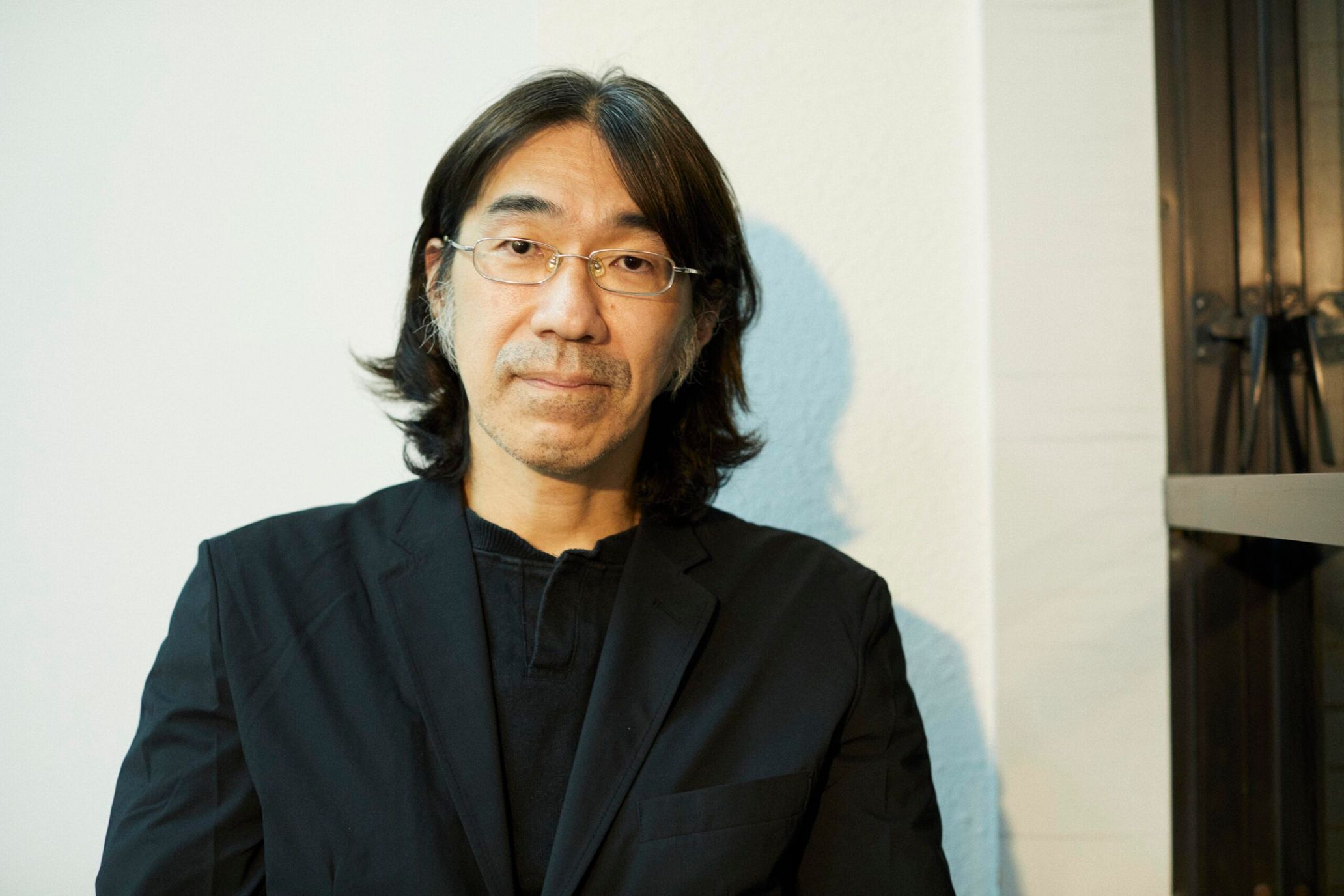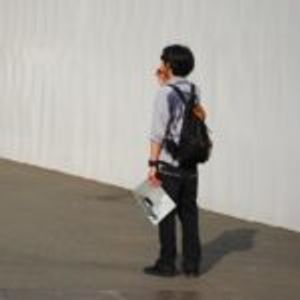He’s a key member of legendary bands such as Happy End and Yellow Magic Orchestra (YMO). He produced music for artists such as Seiko Matsuda and Akina Nakamori in the 1980s. He has freely explored all kinds of music, including folk, rock, pop, techno, ambient, world music, and electronica; he even composed the soundtrack to the Cannes Palme d’Or winning film, Shoplifters (2018). And his name is Haruomi Hosono.
Exposed to American culture and music at an early age, Hosono is a pioneer who popularized Japanese music with Western elements, making it more accessible for a Japanese audience. In 2019, the year that marked the 50th anniversary of his music career, he performed his first solo shows in New York and Los Angeles: two cities in a country that has long served as an inspiration to Hosono and could even be described as the root of his musical career.
This U.S. tour, which was a culmination of Haruomi Hosono’s musical life, is now available to watch as a film called SAYONARA AMERICA. This important film allows us to see the excitement of the people in the U.S.—where he’s received immense support—and at the same time, reflect on how both our daily lives and music have been changed by corona. We asked director Taketoshi Sado, who has been following Hosono for many years, to explain the meaning behind this film.
SAYONARA AMERICA Trailer
©2021 “HARUOMI HOSONO SAYONARA AMERICA” FILM PARTNERS ARTWORK TOWA TEI & TOMOO GOKITA
“YMO made me realize that some music is meant to be listened to.”
ーーSo, I heard that you became a fan of Yellow Magic Orchestra (YMO) after watching them on TV when you were in elementary school.
Taketoshi Sado: When I was a kid, people on music TV shows, like Kenji Sawada and Pink Lady, were really popular. But when I saw YMO for the first time, something about it felt highbrow and different from other music. Until then, I’d enjoyed music as something to watch, but YMO made me realize that some music is meant to be listened to.
ーーAfter you started working for NHK, you were involved in various music programs. When was the first time you worked with Haruomi Hosono?
Taketoshi: The first time I worked with him for real was with the Haruomi Hosono Yellow Magic Show (A music variety show broadcast on NHK BS), which was broadcast back in 2001. At the time, I got the impression that Hosono was a free spirit with a distinct sense of humor. That’s still true today. (laughs)
ーーYour relationship spans over 20 years; I take it you guys get along well.
Taketoshi: I’ve worked with many other musicians, but thankfully, Hosono has reached out to me again and again. Although personally, I don’t know what he sees in me (laughs). I think he most likely understands, even if vaguely, that I have a deep respect for him.
“If it weren’t for the coronavirus, I think the content would have been more music-oriented.”
ーーSAYONARA AMERICA is based around Hosono’s live performances in the US. But I heard you already had the idea for it around the time you released the film about Hosono’s life, NO SMOKING (2019).
Taketoshi: I did. NO SMOKING was a movie that detailed everything from Hosono’s childhood to the present day, so I couldn’t include much footage from his performances. But even at that time, we had talked about how his live performances were great, so we wanted to make that into a movie. After that, I suppose the momentum grew and the film came to fruition.
ーーAlthough I’d think that with the coronavirus, many things didn’t go according to plan.
Taketoshi: All kinds of things were put on pause. The plan was originally for Hosono to perform in the U.S. in 2019, and then in various countries in 2020, but that was canceled. Hosono was holed up at home, so I couldn’t see him either.
ーーIn the film, Hosono says that although the shows in the US were around 2 years ago, it feels like 10 years because of the coronavirus.
Taketoshi: I felt the same way. But it didn’t actually happen that long ago. I think we wouldn’t have felt that way if the coronavirus hadn’t happened and we’d been working as usual.
ーーWere there any changes to the content of the film because everything was on hold?
Taketoshi: If it weren’t for the coronavirus, I think the content would have been more music-oriented. But the scene at the beginning of the film, where Hosono is on the rooftop with his guitar and talking, definitely came about as a result of the coronavirus.
ーーIn that rooftop scene, Hosono speaks very naturally about what he saw and felt during the coronavirus crisis: his state of mind, the sights, his feelings about music. How did that scene come about?
Taketoshi: The idea became different from the original plan because of the coronavirus, so we decided to insert a new scene. Hosono said that he would talk. Then he shot the footage himself and sent it to me.
ーーAfter receiving the video of the rooftop scene and watching it, what were your initial thoughts?
Taketoshi: It had been decided that SAYONARA AMERICA would be the title, and I thought the additional rooftop scene at the beginning would help the audience understand what kind of film it is.
I thought it was a meaningful scene that would become a guide for the film. To show that the film isn’t just footage from his U.S. performances. To say: This is what the film is about, and people should feel this way while watching it.
Even with people from the music industry overseas, “Haruomi Hosono’s name always comes up.”
ーーIn the footage of the U.S. performance that follows, the show felt so real, maybe because of the current situation where people aren’t performing live as much. Hosono has special feelings about the U.S. and said that he was feeling a bit nervous and uncertain before the performance. What was it like to see that up close?
Taketoshi: He’s not the kind of person who clearly says that he’s nervous, so as far as we could see, he was as carefree as always. Looking back on it now, I feel like he must have been feeling a lot of different emotions.
ーーYou’ve traveled with Hosono for his performances in other countries, such as the UK and Taiwan. Were there any differences between the US and those other countries?
Taketoshi: I felt like American audiences were the most advanced when it came to how they listened to music. There’s footage of interviews with local fans, and their interpretation of Hosono’s music captures the truth.
ーーWhy do you think Hosono’s music has been so well-received in the US?
Taketoshi: I’ve worked several times with people from the music industry overseas, and Haruomi Hosono’s name always comes up. Of course, I think his achievements with YMO are a big part of that, and his longtime music fans recognize how incredible that is.
On the other hand, he has a lot of younger fans, and those people don’t just have a blanket understanding of him as a techno musician. I think with today’s music, anything goes—in a good way—and the young people in particular are enjoying music without any preconceptions.
So within all that, as they’re taking a deeper dive into all kinds of music through YouTube, they stumble across Hosono’s music. It’s good music, plain and simple, so I think it really resonates with them.
ーーI was surprised to hear an American fan say that Hosono’s music reminds them of the good old days of American music.
Taketoshi: I think those elements of old American music in Hosono’s performances are the essence of what he’s loved since he was a kid. In other words, he’s extracted the most attractive parts of American music and made his music with that. Perhaps that’s why that American fan had that reaction?
ーーI think back in his Happy End days, his music mixed both American and traditional Japanese elements.
Taketoshi: This is just my opinion, but the Japanese vibe in Happy End’s music is probably due to Takashi Matsumoto’s lyrics. The other members were interested in the sound side of things and were incorporating the essence of musicians like Buffalo Springfield. So that’s probably where the American feel comes from.
“Hosono thought of the big ideas, and I created the film based on those ideas.”
ーーThe film effectively inserts old American footage of Douglas MacArthur, Hoagy Carmichael’s “Hong Kong Blues,” the sci-fi film Invasion of the Body Snatchers, and more, as if to remind us of the scene during Hosono’s childhood. How did this idea come about?
Taketoshi: The film was titled SAYONARA AMERICA, and that became a north star for me in making this film. So I thought it’d be more compelling if the amazing American culture that Hosono loves was scattered throughout the movie. I decided this while talking it over with him.
ーーHosono was also involved in the production of this film. How did you two split up your respective roles?
Taketoshi: I guess Hosono thought of the big ideas, and I created the film based on those ideas. Like, “Does something like this work?” “Yeah, that looks good.” (laughs)
ーーYou two have really built a mutual trust!
Taketoshi: This isn’t a drama film, so there’s no point if it deviates from what Hosono is thinking. It’s important that the film expresses his charm and thoughts, so I had to gather Hosono’s intentions and make that the foundation of the film.
ーーYou’ve worked on a variety of films. Did you have that same policy with other documentaries you made?
Taketoshi: Yeah. I don’t think you should lie. It’s okay to have an exaggerated story or reenactment though, as long as it’s in line with the subject’s thoughts and intentions. But I don’t think it’s right to lie in a way that’s falsifying something to make it look better or completely different from what really happened.
ーーWhat led you to have that film-making style?
Taketoshi: This used to happen to me when I was younger, but as an NHK employee, people from record companies and such were very polite to me. But I don’t think that would have been the case if I were there as an individual. In other words, the way they were treating me was based on the company’s ability rather than my own. I didn’t like that at first. But then I realized that it was very meaningful to be able to share the true charm of all these talented people through NHK. That’s why I thought it was important to accurately convey that charm.
ーーYou’ve directed a film for Perfume, for example. Do you have the same policy when working with them?
Taketoshi: Yes, it’s the same. The three members of Perfume work unbelievably hard to improve themselves, don’t they? They’re striving to be better, and that makes me want to support them and show them doing that without lying.
Hosono has always been an incredibly talented person, so there’s no need for me to go out of my way to change something. (laughs)
ーーThat being said, it’s not like you just show up on set and shoot everything exactly as is.
Taketoshi: That’s true, so it’s hard to explain how I shoot. I guess you could say this is normal, but I try to capture all kinds of things, like the atmosphere of the moment, what the subject values, what they say and do in their daily lives rather than just their art. Also, it can differ depending on the subject. For example, when I shoot the professor [Ryuichi Sakamoto], my approach is different. (laughs)
“Hosono is all about pursuing his interests as he pleases”
ーーGoing back to the film, SAYONARA AMERICA conveys Hosono’s feelings for America. I felt like his solo shows in America were the culmination of that.
Taketoshi: That’s true. Perhaps he felt that the music he’d done up until that point wasn’t a mistake after all. In that sense, maybe there was a conclusion reached. And I think that became clearer because of the time spent unable to perform because of the coronavirus. I think that’s the reason behind this title.
ーーWill he go in a different direction in the future? In the movie, he says, “I’ve given up on giving up music,” so I thought maybe he was thinking about something different.
Taketoshi: I’m not sure how serious Hosono was about that statement either. (laughs)
ーーI see (laughs). I guess you can tell because you’ve been known him for a long time.
Taketoshi: But basically, Hosono is all about pursuing his interests as he pleases. So if he finds a new sound, he’ll do that, and if he becomes interested in something other than music, he might do that. In any case, I think he’ll be doing something.
ーーYou’ve been involved in music for a long time. The coronavirus had a big impact on music, especially on live performances and in-person experiences. What do you think of the situation going forward?
Taketoshi: Honestly, I feel like live streaming has its limits. I watch all kinds of live streams, but I end up going to the bathroom partway through, or looking at my phone, or starting to do something else (laughs). So if you consider that, I think experiencing music in a live house or concert hall atmosphere was really valuable. I was reminded that it’s important to feel the music with your body or to be in an environment where you’re bound by time and place.
ーーThere’s a certain tension that only exists there.
Taketoshi: With a concert, it’s unlikely that 100% of the songs will be the ones that you like. And the climax generally comes in the second half, so persevering until then can be cathartic (laughs). There were all kinds of elements that made a concert what it was.
ーーIt’s hard to imagine much about what will happen in the future.
Taketoshi: The value of a live experience is universal, but even if live performances are as exciting as they used to be, there’s the possibility that there’ll be limitations.
But I think the way we receive and listen to music will continue to change. YouTube and other content are unlimited and free, so that might actually be an opportunity. To put it bluntly: In the past, only American and British music became popular on a global scale. But I think other countries can become just as popular on a global scale. As the way we listen to music and the way it spreads changes, I want to see what will happen to shared experiences like live performances.
ーーIt’s great to watch a live performance in a movie theater, like we can with this film.
Taketoshi: I definitely feel like that has potential. With the U.S. performances featured in the film, I think it would have been hard for people here to actually have seen them in person, so maybe they’ll be able to simulate the experience in a movie theater with a big screen and loud volume.
ーーThank you for sharing your thoughts with us. Lastly, could you tell us how you feel about this film?
Taketoshi: First, I want to tell people to enjoy music as they please. In addition to that fundamental message, I think this film is also an opportunity to think about things, like: How will I enjoy entertainment in the wake of the coronavirus? How should we live going forward? Of course, there’s no clear answer to these questions, but Hosono’s stance—to pursue your interests as you please—is one potential answer. So, what will you all do? That’s what I want people to feel for themselves.
Taketoshi Sado
Taketoshi Sado is a producer and film director. In 1990, he joined NHK, and today, he is an executive producer for NHK Enterprises. He works on entertainment programs with a focus on music. Major programs he has overseen include Kohaku Uta Gassen, MUSIC JAPAN, Schola: Sakamoto Ryuichi Ongaku no Gakko, Iwai Shunji no Movie Labo, Minna no Uta, Haruomi Hosono Yellow Magic Show, and more. He has also directed documentaries including Haruomi Hosono’s NO SMOKING and Perfume’s We are Perfume: World Tour 3rd Document.
■ SAYONARA AMERICA
Music/Performance: Haruomi Hosono
Director: Taketoshi Sado
Producer: Masahiro Handa
Production: NHK Enterprises
Distributed by: GAGA
Planning: Asahi Shimbun
In theaters November 12th, 2021
https://gaga.ne.jp/sayonara-america
Photography Teppei Hoshida
Text Analog Assassin
Translation Aya Apton



